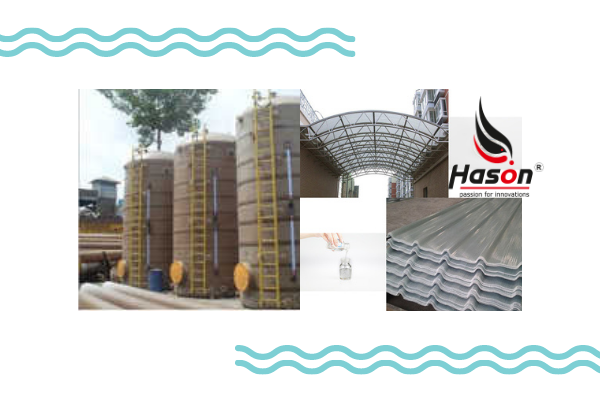What is FRP Resin?
FRP resin in India is created with polymer matrix reinforced with fibres. In the present times, many individuals depend on the robust goods to make the structure solid and clear of oxidation. There seem to be a number of businesses that offer FRP goods at reasonable rates. Such elements are also accessible in personalized ways. Fiber reinforced polymers (FRP) are quite desirable for civilian technology applications due to its high power, corrosion resistance, and longevity. The reinforcement of steel panels with FRP resin India is another one of those best applications. The efficiency of this reinforcement method at higher temps is still uncertain and requires further research
The emergence of polyunsaturated polyester and polyethylene terephthalate resins of their use in manufactured polymers is one of the great advances of the Modern Period in material science. In aviation, manufacturing, shipping, construction, and process industries machinery, such flexible synthetic polymers quickly seen recognition, whereby their unparalleled uniqueness introduced quality and innovative approaches to the practitioner. Polymer fiber reinforced plastic (FRP) resins India has replaced other much more expensive metals in several process industries machinery, such as reservoirs, tubing, vent and hose structures, response vessels, and so on., for its excellent shock protection property. Epoxy resin has replaced Portland cement in highways bridge textures for its easy curing. The restoration of urban and manufacturing system storm drains utilizing healed pipe sewers has been reshaped by different FRP resins incorporating sophisticated hydrating techniques (CIPP).
Let’s check some of the advantages of FRP resin in India compared to the traditional materials
- Benefits related to weight
An additional unmistakable bit of leeway of FRP is its low weight-to-strength proportion. As a dependable guideline, for a similar strength, FRP will weigh roughly one seventh as much as steel, and half as much as aluminum. Lightweight properties are significant while thinking about the expense and simplicity of establishment, particularly for line and tanks. FRP’s innate lightweight is a bit of leeway when gear should be mounted on existing constructions, like scrubbers on mezzanines or housetops, and for strength applications, for example, FRP tank trailers.
- High Strength
Though not like significant for erosion resilient apparatus, greater power do perform as a main part in shaping of FRP products applications like the armaments, pultruded outlines, and so on. For string coiled pipe and channel, the larger power offers the insubstantial features.
- Economy
Sometimes, a big benefit of FRP resins in India is its lower price. To equate the cost of FRP with the another materials, there is no general rule. These factors depend on the application, the requirements for layout, the stresses (or vacuum cleaners) required, the specifications of the item, and the price and access to raw materials.
- Flexibility
Many individuals oversee the adaptability of FRP. But FRP resin India is best for several other applications as anybody can work on things which is not possibly to work economically with additional resources. You could easily mold nearly any formation, or portion of equipment, for where you could create a permanent and temporary mold.
- Non-conductive
Insulation materials are usually FRP composite materials. They can be used for power lines, hold coatings as well as another applications in which there is a downside to electrical properties. Carbon composite, which would be permeable by itself, is the exclusion. While FRP resin are non-conductive, if desired, additives might be used to cause semi-conductive and conductive conduct. Non – magnetic concrete FRP components made with steel fibers and conventional thermoplastic resins are – anti components. By the introduction of electrically sensitive additives or fibers, magnetic fields can be incorporated into FRP laminated composites.
- Erosion Resistance
Maybe due to the intrinsic tensile strength, the main reason for using fiber-glass-reinforced plastics (FRP) is that these resins have been the only products that can manage a specified customer experience in certain instances; and in other instances, their fracture toughness is coupled with their efficiency in addition to making them the most affordable option that is appropriate. The sensitivity of FRP to oxidation is a result of either the strength properties and the particular resin used for the chipboard. Broadly speaking, the greater the final defense, the more prone the chipboard is to oxidation.



